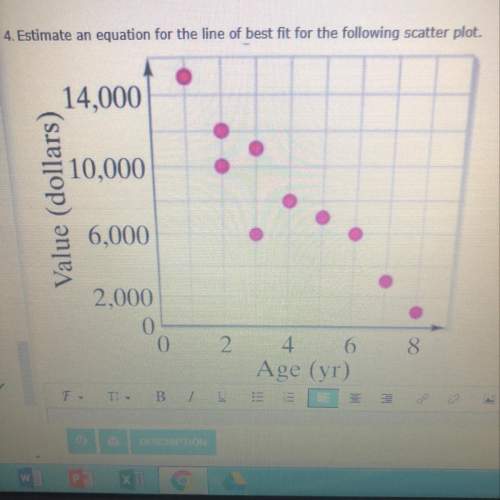
Mathematics, 21.04.2021 15:50 rurbanok12
In this problem we use the change of variables x=2s+t, y=s−3t to compute the integral ∫R(x+y)dA, where R is the parallelogram with vertices (x, y)=(0,0), (4,2), (7,−7), and (3,−9). First find the magnitude of the Jacobian, ∣∣∂(x, y)/∂(s, t)∣∣ then, ∫R(x+y)dA=?

Answers: 3
Another question on Mathematics

Mathematics, 21.06.2019 13:40
The pressure exerted on the walls of a container by a gas enclosed within it is directly proportional to the temperature of the gas. if the pressure is 6 pounds per square inch when the temperature is find the pressure exerted when the temperature of the gas is 380 degrees f show work for the
Answers: 2

Mathematics, 21.06.2019 18:00
Mozart lenses inc. recently introduced seelites, a thinner lens for eyelasses. of a sample of 800 eyeglass wearers, 246 said they would purchases their next pair of eyeglasses with the new lenses. lenses inc. estimates that the number of people who purchase eyeglasses in a year is 1,700,000. most eyeglasses wearer buy one new pair of eyeglasses a year. what is the annual sales potential for the new lenses.
Answers: 1

Mathematics, 21.06.2019 18:00
Sarah used her calculator to find sin 125 degrees. she wrote down sin sin125 degrees.57. how could sarah recognize that her answer is incorrect?
Answers: 1

Mathematics, 21.06.2019 19:00
Teams of 4 are competing in a 1/4 mile relay race. each runner must run the same exact distance. what is the distance each teammate runs?
Answers: 1
You know the right answer?
In this problem we use the change of variables x=2s+t, y=s−3t to compute the integral ∫R(x+y)dA, whe...
Questions

English, 24.04.2020 05:41



English, 24.04.2020 05:41




Mathematics, 24.04.2020 05:41




Computers and Technology, 24.04.2020 05:42

English, 24.04.2020 05:42

English, 24.04.2020 05:42

Mathematics, 24.04.2020 05:42



Biology, 24.04.2020 05:42

Mathematics, 24.04.2020 05:42

Mathematics, 24.04.2020 05:42




